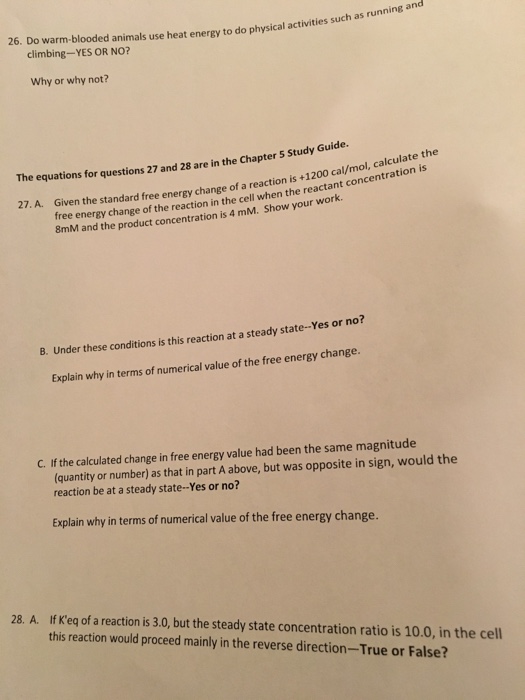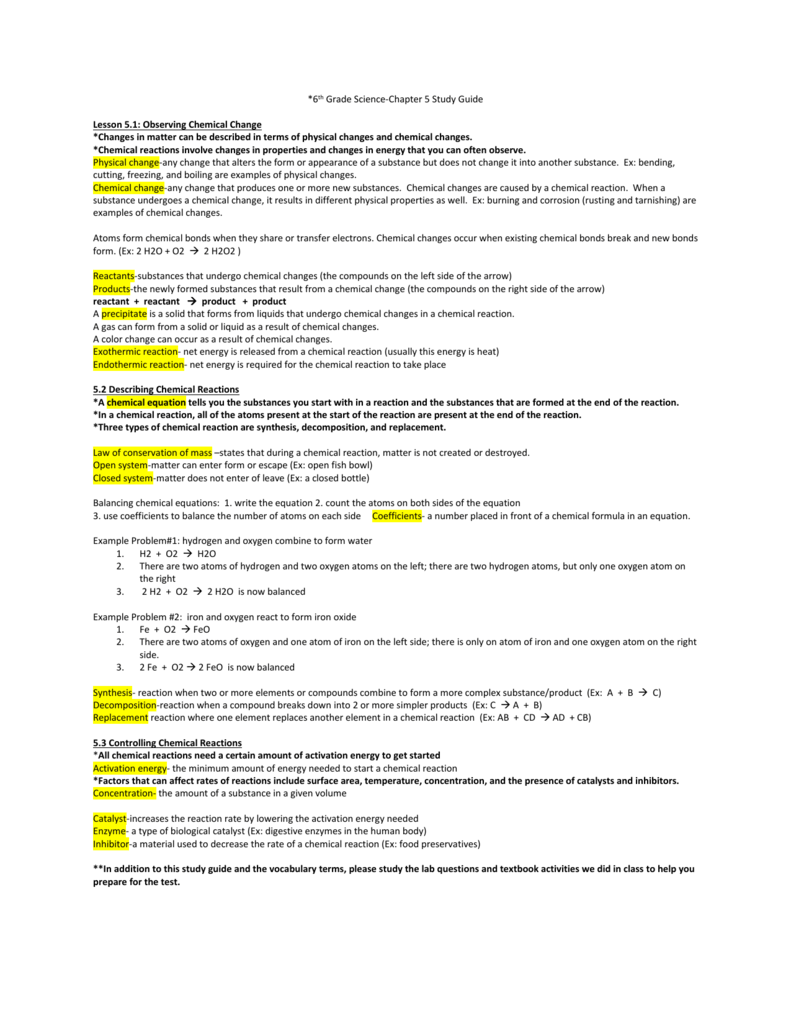Reaction Energy Study Guide
Test and improve your knowledge of Holt McDougal Modern Chemistry Chapter 16: Reaction Energy with fun multiple choice exams you can take online with Study.com. CHAPTER 1 6 REVIEW. Reaction Energy. SHORT ANSWER Answer the following questions in the space provided. For elements in their.
Key Points. Chemical reactions often involve changes in energy due to the breaking and formation of bonds. Reactions in which energy is released are exothermic reactions, while those that take in heat energy are endothermic. Terms. exothermicA description of a chemical reaction that releases heat energy to its surroundings. endothermicA description of a chemical reaction that absorbs heat energy from its surroundings. enthalpyIn thermodynamics, a measure of the heat content of a chemical or physical system.

The change in enthalpy of a chemical reaction is symbolized as ΔH. Stryker medical bed parts manual. Due to the absorption of energy when chemical bonds are broken, and the release of energy when chemical bonds are formed, chemical reactions almost always involve a change in energy between products and reactants. By the Law of Conservation of Energy, however, we know that the total energy of a system must remain unchanged, and that oftentimes a chemical reaction will absorb or release energy in the form of heat, light, or both.
The energy change in a chemical reaction is due to the difference in the amounts of stored chemical energy between the products and the reactants. This stored chemical energy, or heat content, of the system is known as its enthalpy. Exothermic Reactions Exothermic reactions release heat and light into their surroundings. For example, combustion reactions are usually exothermic. In exothermic reactions, the products have less enthalpy than the reactants, and as a result, an exothermic reaction is said to have a negative enthalpy of reaction. This means that the energy required to break the bonds in the reactants is less than the energy released when new bonds form in the products. Excess energy from the reaction is released as heat and light.
Chemical reactionA thermite reaction, which produces molten iron. Endothermic Reactions Endothermic reactions, on the other hand, absorb heat and/or light from their surroundings.
For example, decomposition reactions are usually endothermic. In endothermic reactions, the products have more enthalpy than the reactants. Thus, an endothermic reaction is said to have a positive enthalpy of reaction. This means that the energy required to break the bonds in the reactants is more than the energy released when new bonds form in the products; in other words, the reaction requires energy to proceed. The decomposition of water into hydrogen and oxygenWhen water is heated to over 2000 degrees Celsius, a small fraction will decompose into hydrogen and oxygen. Significant heat energy is needed for this reaction to proceed, so the reaction is endothermic.
Energy Energy is the potential to do work, such as accelerating an object (kinetic energy), lifting things up (potential energy), producing electric power (electric energy), raising the temperature of a system (heat) and producing sound (waves of energy). In physics, work is formally defined as force times the distance in the direction of the force, and such a definition defines the very basic idea of energy. Energy is the driving force of changes. All changes are caused by energy, and the cause or energy can be in many forms: light, heat, work, electrical, mechanical (energy stored in a spring), chemical, etc. The changes are phenomena caused by energy, but more importantly, forms of energy inter-convert into one another during the changes.
Unlike some of these changes, forms of energy convert into one another always at a fixed rate. Exactly 4.184 J of mechanical work converts into 1.00 cal measured as heat, and vice versa. Conservation of Energy Energy can neither be destroyed, nor created; it converts from one form (for example heat) to another form (say mechanical work) at a fixed rate. This is the fundamental principle of conservation of energy. To indicate changes, we use d to represent the delta ( D) commonly used in text books, because using the delta will cause the loading of this page into your computer to be very slow. The internal energy E accounts for energy and work transferred to a system. This concept is another form of the principle of conservation of energy.

Energy Unit Study Guide
The change in internal energy dE of a closed system increases by the amount of energy input to the system. Such input can be in the form of heat ( q) or (mechanical or any other form) of work ( w). Usually, it is formulated as (dE = q + w ). Heat transferred out and work done by the system are assigned negative signs by convention. This relationship is usually referred to as the first law of thermodynamics.

Energy Study Guide
When energy is transferred from system A to system B, what happens to the energy? Does energy disappear?
Types Of Energy Study Guide
The internal energy as defined above shows that energy does not disappear, because the internal energy loss of system A equals the internal energy gain of system B. The change in internal energy, dE, is negative for system A, but positive for system B. Energy is neither destroyed, nor created.